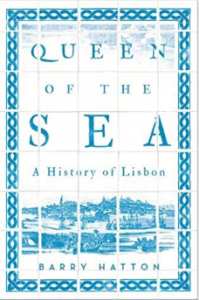
Intriguing Lisbon


Barry Hatton highlights Lisbon’s geographical position at the point where on Europe’s longest rivers meets the Atlantic with a majestic yawn ( 12.43 miles across). A 19th-century homage to Lisbon’s Roman past, a unique design that features black basalt rippling across a sea of shiny white tiles, replicated all over Portugal’s once mighty global empire and colonies that stretched from Macau near Hong Kong to Luanda on Africa’s west coast and down to Rio de Janeiro in Brazil. Only Goa still home splendid Portuguese style mansions, escape that distinctive wave.
The beautiful pavements were set in place by chained convicts. The City’s fabulous derived from the gold mines in Brazil that Portugal’s king ruthlessly plundered throughout the 18th century until there was nothing left to steal. The miners were African tribesmen brought in the 1700s to constitute the biggest slave-trafficking country in the world. Shiploads of black captives were auctioned naked on the Lisbon docks.
In the 1500s when Lisbon was lavishly ruled by Manuel I, rudely nicknamed “ the Grocery King” by France’s envious Francois I. Pope Leo X was thrilled by Manuel’s ostentatious gift of a white elephant from India – the first to have been seen in Europe since Hannibal’s day and only little less enraptured by Ganda, a brocade-collared two-ton Rhino that, having drowned en route, was dried out and stuffed and then packed off to Rome.
IN 1755, Voltaire used Candide’s Dr Pangloss to mock the widespread notion that a disapproving deity was personally responsible for the earthquake, catastrophic tsunami and six-day firestorm that buried, drowned or burnt alive one-tenth of Lisbon’s population, while destroying, in just seven minutes, most of its opulent buildings.
Lisbon faced its second existential test in 1807 when Napoleon sent a ruthless young general to deliver the city into his hands. Hatton said, “as Junot barged in the front door, the royal family slipped out from the back”.
Guarded by four ships from Britain’s Royal Navy, the demented Queen Maria I, Dom Joao (the Prince Regent) and Lisbon’s wealthiest citizens sailed off to safety in Brazil, where a new kingdom was briskly created and Portugal’s royals remained in Brazil for another 13 years.
When Queen Elizabeth II visited Lisbon in 1957, President Lope’s homage to “ a 600-year-alliance” tactfully omitted any mention of the British Ultimatum of 1890, that bitter moment in which Portugal was obliged to surrender her lucrative African colonies while still maintaining a smiling public face.
Today Portugal is cited as an inspiring example of an economic resurgence with Lisbon’s uncanny ability to survive.
Queen of the Sea: A History of Lisbon by Barry Hatton, Hurst £14.99, 290 pages.
